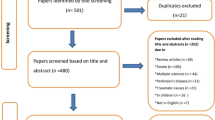Abstract
The electronystagmographical analysis of the eye movements provoked by caloric stimulation is an important method in the evaluation and topical diagnostic procedure of several vestibular lesions. The aim of the study was to compare the electronystagmographical results of caloric response in several vestibular disorders. The patients were divided into five groups: right and left unilateral and bilateral peripheral lesions, central vestibular dysfunction, and normal vestibular function. In the normal vestibular system group the average caloric nystagmus SPV in normal vestibular system was 17.4°/s. In the peripheral lesion groups the average slow phase velocities are decreased in the affected side, as we expected. In the compensated vestibular lesion the average ASPV of caloric nystagmus is also decreased on the unaffected side. This might be caused by the effect of the central adaptive mechanisms. According to our observations, in central dysfunctions the average caloric ASPV and the spontaneous nystagmus ASPV is increased (25.0°/s). This suggests that in central vestibular lesions the central inhibiting mechanisms of the caloric response are impaired. Our results show that electronystagmographical analysis of spontaneous and caloric nystagmus is very important in the evaluation of dizzy patients.

Similar content being viewed by others
References
Brandt Th (2000) Approaching the patient in: Thomas Brandt: vertigo its multisensory syndromes, 2nd edn. Springer, London, pp 23–48
Wuyts FL, Stappen AV, Buyle S, Mercelis R, Van der Heyning PH (2000) Normative data of computerised electronystagmography in a healthy population between 25 and 70 of age. In: Claussen C-F, Haid C-T, Hofferberth B (eds) Equilibrium research, clinical equilibriometry and modern treatment. Elsevier, Amsterdam, pp 161–169
Bhansali SA, Honrubia V (1999) Current status of electronystagmography testing. Otolaryngol Head Neck Surg 120(3):419–426
Kumar A (1981) Diagnostic advantages of the Torok monothermal differential caloric test. Laryngoscope 91(10):1678–1694
Cipparrone L, Fratiglioni L, Siracusa G, Amato MP, Amaducci L, Pagnini P, Giaccai F (1989) Electronystagmography in the diagnosis of multiple sclerosis. Acta Neurol Scand 80(3):193–200
Odkvist LM (1988) Otoneurological diagnostics in posterior fossa lesions. Acta Otolaryngol Suppl 452:12–15
Halmagyi GM, Cremer PD, Anderson J, Murofushi T, Curthoys IS (2000) Isolated directional preponderance of caloric nystagmus: I. Clinical significance. Am J Otol 21(4):559–567
Chartr® ENG operator manual eye movement test system (1994) ICS Medical Corporation, Shamburg
Zingler VC, Weintz E, Jahn K, Mike A, Huppert D, Rettinger N, Brandt T, Strupp M (2008) Follow-up of vestibular function in bilateral vestibulopathy. J Neurol Neurosurg Psychiatry 79(3):284–288 Epub 2007 Jul 17
Yuan BC, Tzeng HM (2006) Developing a predictive model for vertigo using demographic and laboratory data: an evidence-based medicine approach. Acta Otolaryngol 126(1):20–24
Kerber KA, Brown DL, Lisabeth LD, Smith MA, Morgenstern LB (2006) Stroke among patients with dizziness, vertigo, and imbalance in the emergency department: a population-based study. Stroke 37(10):2484–2487 Epub 2006 Aug 31
Melnikov OA, Koltisheva BE, Paukova MV, Zaritzky VV. Endolymphatic hydrops patients with benign paroxysmal positioning vertigo XXX Congress of the NES—Oporto—Portugal. Arch Sensol Neurootol Sci Pract. ISSN: 1612-3352, ASN. http://www.neurootology.org/archives/97
Suarez H, Alonso R, Arocena M, Suarez A, Geisinger D (2011) Clinical characteristics of positional vertigo after mild head trauma. Acta Otolaryngol 131(4):377–381 Epub 2010 Dec 28
Author information
Authors and Affiliations
Corresponding author
Rights and permissions
About this article
Cite this article
Szirmai, A., Keller, B. Electronystagmographic analysis of caloric test parameters in vestibular disorders. Eur Arch Otorhinolaryngol 270, 87–91 (2013). https://doi.org/10.1007/s00405-012-1939-1
Received:
Accepted:
Published:
Issue Date:
DOI: https://doi.org/10.1007/s00405-012-1939-1




